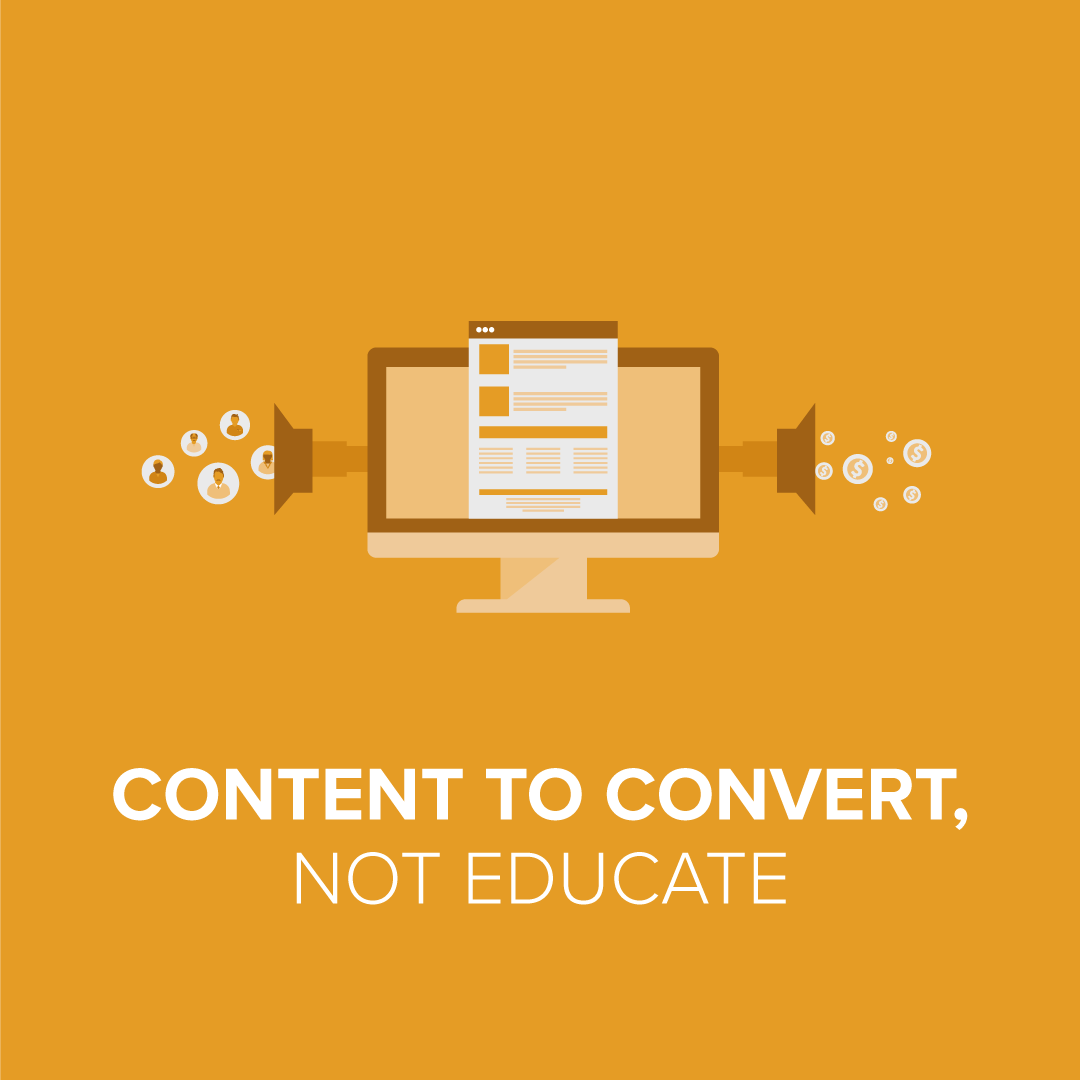 At its most basic level, what’s the ultimate purpose of your website? Why are you paying to develop, host and maintain it? Irrespective of your business model, your industry or your digital strategy, the answer should be the same: to generate sales. At the end of the day, whether you’re selling professional services or popcorn, your website is there to turn website window-shoppers into paying customers, not teach them or entertain them, end of story. Use content to convert, not educate.
At its most basic level, what’s the ultimate purpose of your website? Why are you paying to develop, host and maintain it? Irrespective of your business model, your industry or your digital strategy, the answer should be the same: to generate sales. At the end of the day, whether you’re selling professional services or popcorn, your website is there to turn website window-shoppers into paying customers, not teach them or entertain them, end of story. Use content to convert, not educate.
From 20,000 feet, this fundamental marketing purpose of any company’s website should be pretty obvious to any business owner. Zoom in a bit closer, when business owners start picturing their own website, and that truth tends to get lost in the weeds really easily. While it’s important to build a brand and tell your story, it’s much – and I mean much – more important to focus on generating sales. That’s where content comes in.
Content on your website is there for one reason, and one reason only. It’s there to drive conversions.
How you define conversions on your website hinges greatly on your business model, sales funnel and the scope of your website. For e-commerce sites, a conversion is a sale, where for professional services, it’s to generate a lead. Heck, for Facebook, a conversion is getting you to interact with content in a way that expands to the demographic profile it sells to advertisers. Every great website is built around conversions.
Your site’s content plays a critical role in generating conversions. Your content’s also racing against the clock. On average, a visitor spends less than a minute on a website. That means your content has to immediately work for a conversion and, conversely, your customers aren’t going to spend five minutes wading through irrelevant pages trying to find what they need. Customers should be using your website to make purchasing decisions, not learn about your industry.
Very broadly speaking, content that drives conversions includes:
- Information on Products & Services: Beyond the obvious fact that you need to tell your customers how you make their lives better, this information is critical for developing successful and cost-effective AdWords campaigns. The No. 1 reason customers visit your website is to research your goods. Give them the information needed to make an informed decision to contact you or buy your stuff.
- Brand Differentiators: Why would your customer choose you rather than your competition? Make it immediately clear what you bring to the table that nobody else does. This can be a bit tricky. While you’ll want to touch on these, too much emphasis on your story, staff and history can bury more factual content.
- Validators: Reduce customer anxiety by positioning yourself as a leading voice in your field, be it with customer testimonials, certifications and awards.
- SEO Content: On its surface, blog and landing page content seems to break the “Convert, don’t educate” rule. If it’s not driven by a solid SEO strategy, it probably does, but if it’s created with intent, targeting topics identified to be of interest to potential customers or containing the keywords you need to push your site higher in SERP pages. Blogs and content pages are the entry point to your sales funnel, and should be designed to eventually lead customers to a conversion.
It’s 2018, and time to start thinking about your website as a cornerstone of your marketing. As such, it’s got to pull its weight and start bringing in customers or making sales. Keep the end goal of content to convert in mind, and watch your website turn into a sales engine.
